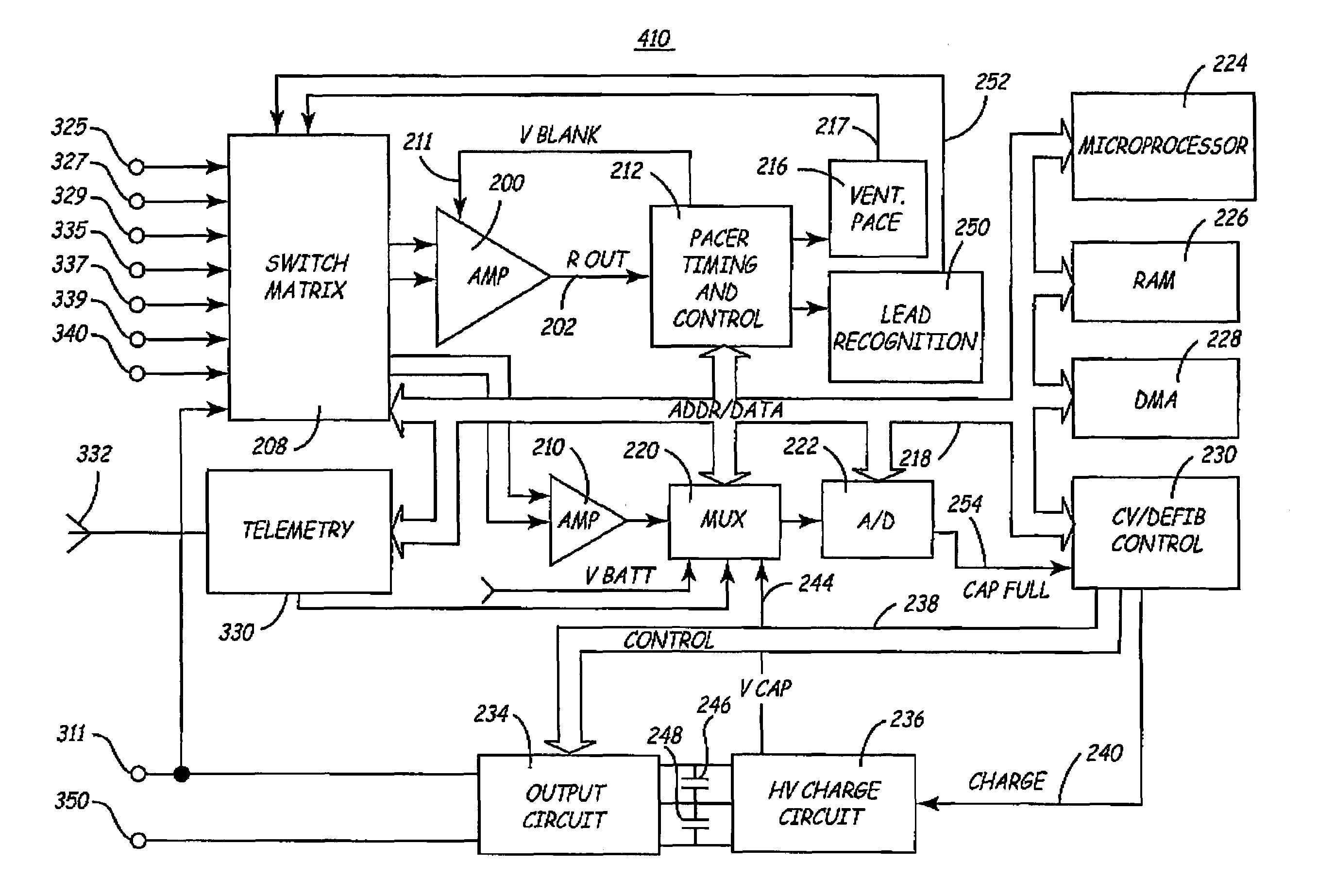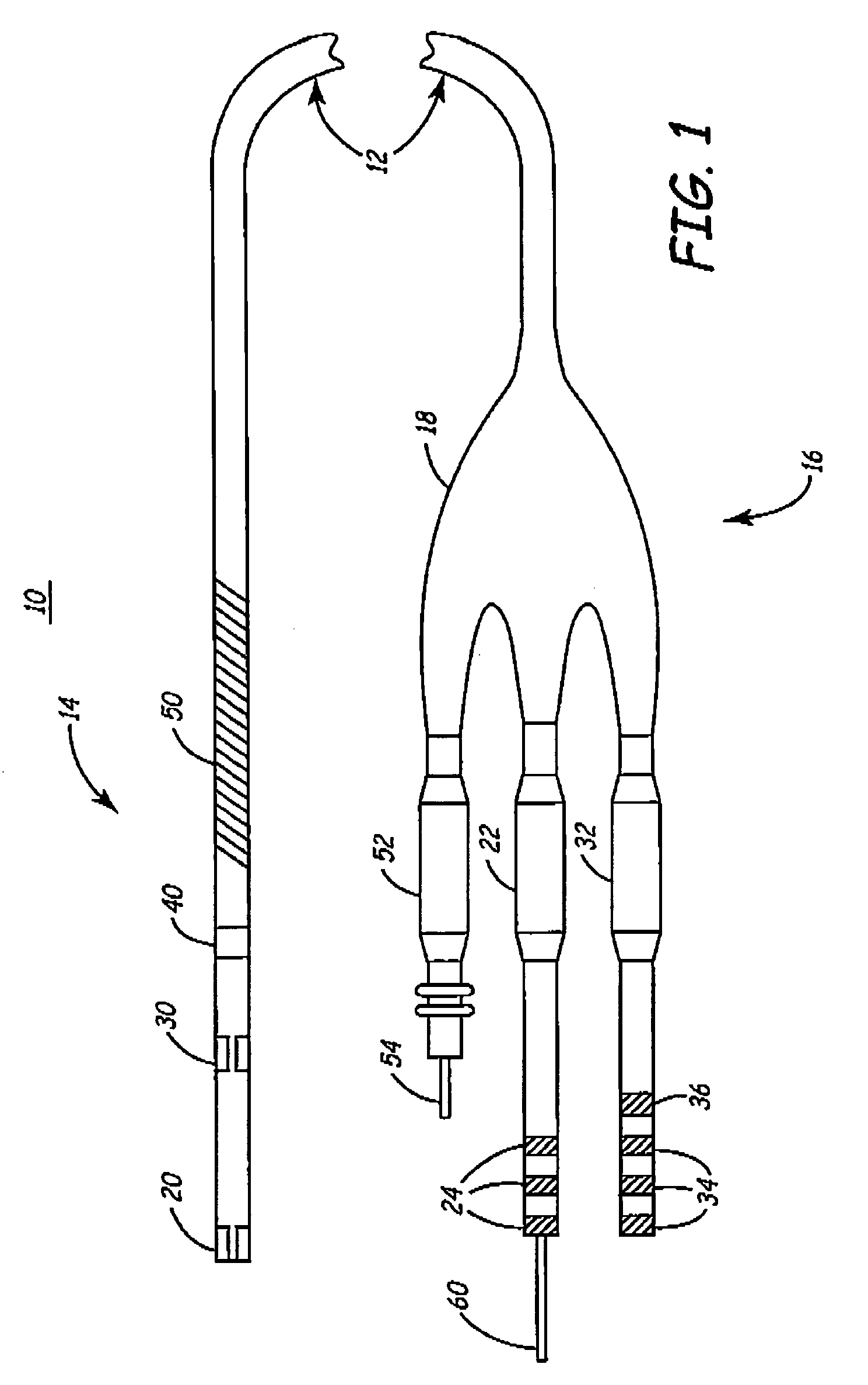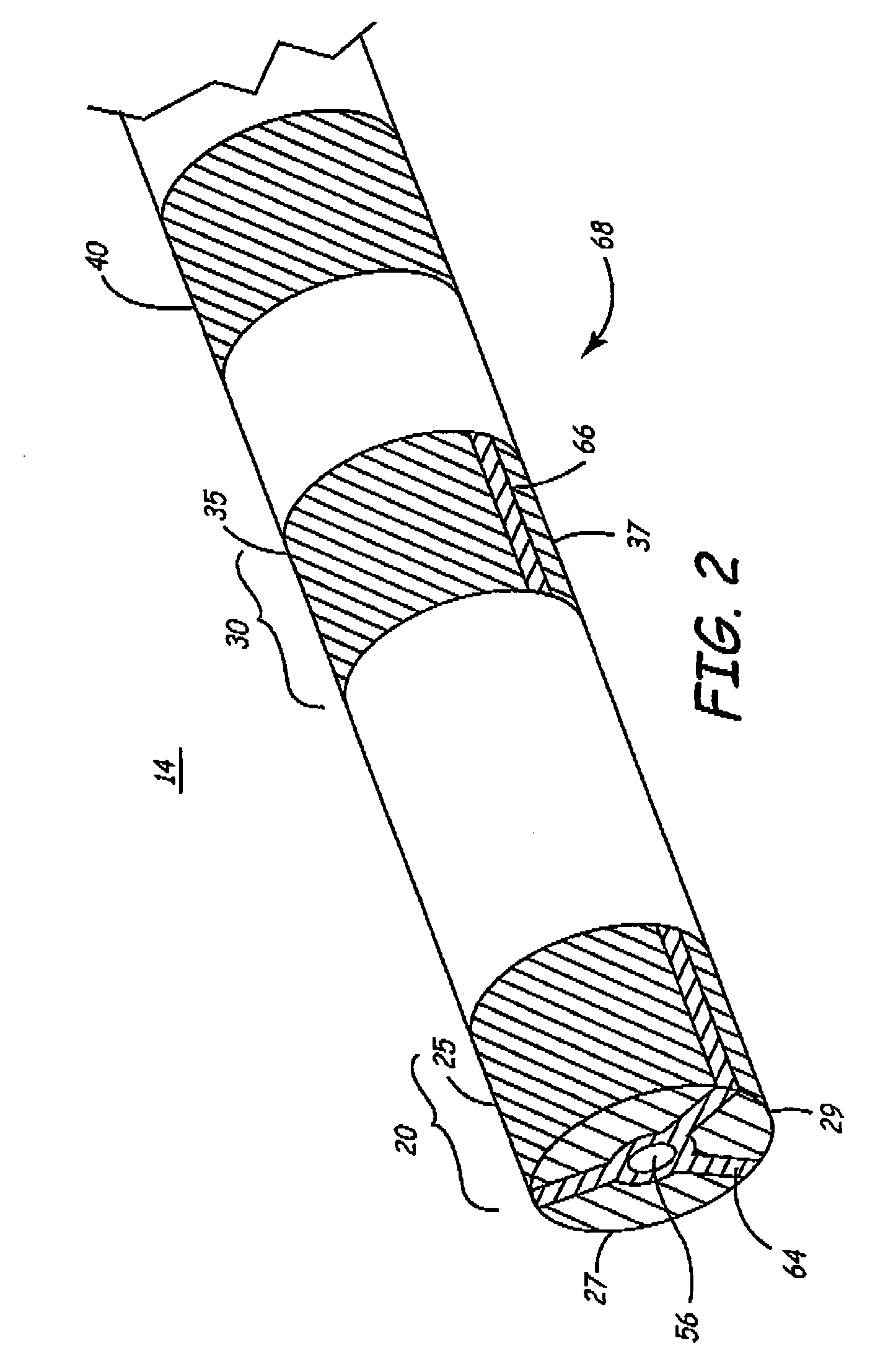Method and apparatus for selecting an optimal electrode configuration of a medical electrical lead having a multiple electrode array
a technology of multiple electrode arrays and electrode configurations, which is applied in the field of implantable electrical stimulation and/or sensing leads, can solve the problems of reducing the useful life of batteries, inappropriate withholding or delivery of therapy, and fixation methods that are not entirely appropriate for left heart stimulation and sensing applications
- Summary
- Abstract
- Description
- Claims
- Application Information
AI Technical Summary
Benefits of technology
Problems solved by technology
Method used
Image
Examples
Embodiment Construction
[0028]In the following detailed description, references are made to illustrative embodiments of medical leads adapted to be located in the heart or cardiac blood vessels in which aspects of the present invention may be implemented. It is understood that the invention may be practiced in other body implantable leads positioned for sensing or stimulating excitable tissue.
[0029]FIG. 1 is a plan view of a multipolar cardiac lead in accordance with an embodiment of the present invention. As illustrated in FIG. 1, a lead 10 according to the present invention includes an elongated lead body 12 having a connector assembly 16 at a proximal end adapted for connecting to an implantable device, such as an ICD, and an electrode head assembly 68 at a distal end 14 for carrying one or more electrodes. Lead 10 is shown having, at or near distal end 14, a tip electrode array 20, a ring electrode array 30, a ring electrode 40, and a defibrillation coil electrode 50. The tip electrode array 20 and the...
PUM
 Login to View More
Login to View More Abstract
Description
Claims
Application Information
 Login to View More
Login to View More - R&D
- Intellectual Property
- Life Sciences
- Materials
- Tech Scout
- Unparalleled Data Quality
- Higher Quality Content
- 60% Fewer Hallucinations
Browse by: Latest US Patents, China's latest patents, Technical Efficacy Thesaurus, Application Domain, Technology Topic, Popular Technical Reports.
© 2025 PatSnap. All rights reserved.Legal|Privacy policy|Modern Slavery Act Transparency Statement|Sitemap|About US| Contact US: help@patsnap.com



